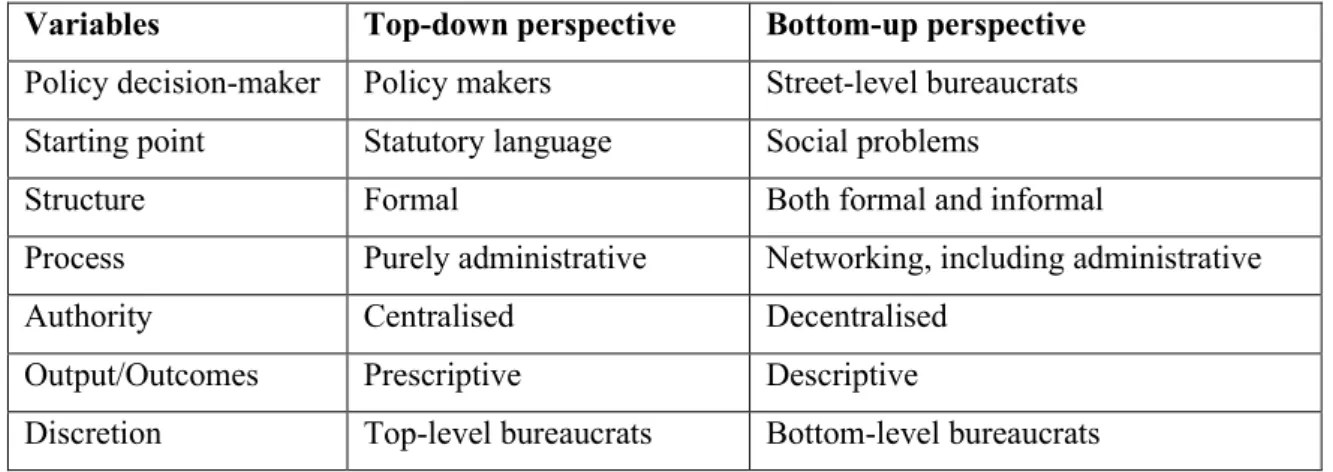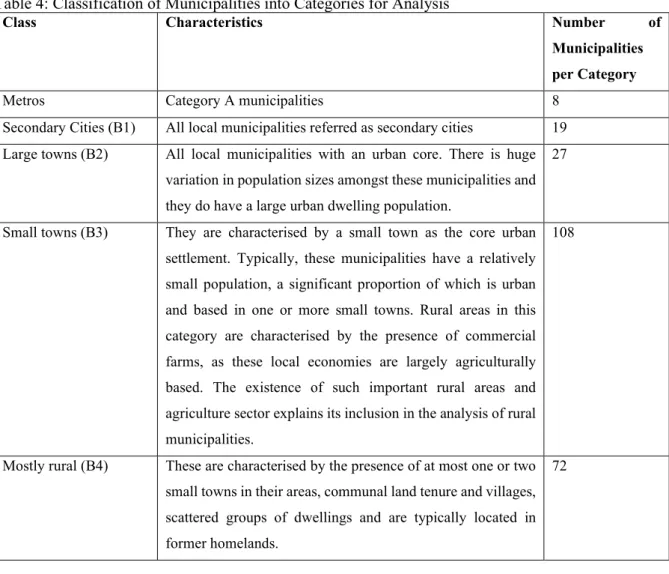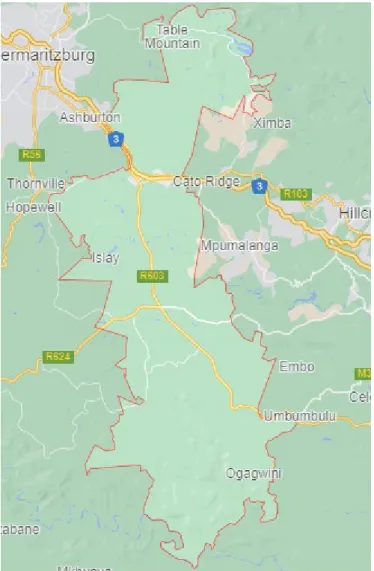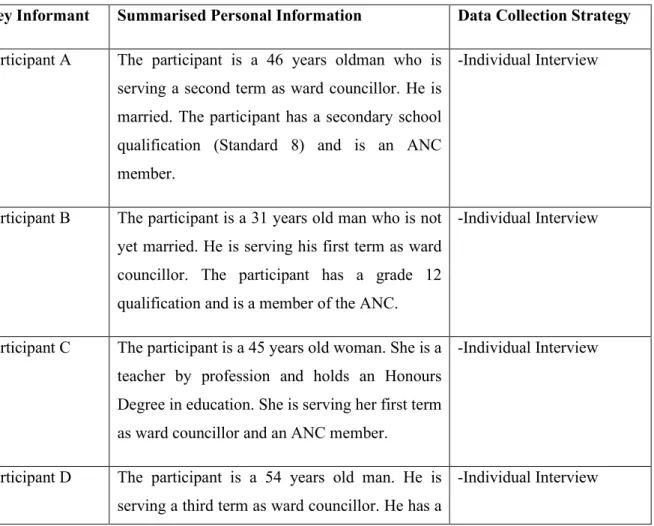These include weak public participation structures, lack of monitoring and evaluation systems, poor coordination of rural development program implementation at local government level. DPME Department of Policy Monitoring and Evaluation DRDLR Department of Rural Development and Land Reform DLA Department of Land Affairs.
CHAPTER ONE: INTRODUCTION AND BACKGROUND
- INTRODUCTION
- STUDY BACKGROUND AND RATIONALE
- STUDY MOTIVATION
- RESEARCH PROBLEM
- RESEARCH AIMS
- RESEARCH QUESTION AND SUB-QUESTIONS
- RESEARCH OBJECTIVES
- CHAPTER OVERVIEW
The main aim of the study is to contribute to the wider issues of rural development and public participation in the post-apartheid era. Chapter three: examines the growth of rural development policies in post-apartheid South Africa.
CHAPTER TWO: LITERATURE REVIEW AND CONCEPTUAL FRAMEWORK
INTRODUCTION
CONCEPTUALISING RURAL DEVELOPMENT
- Defining the Rural
- Defining Rural Poverty
- Defining Rural Development
- Historical background of rural development
- Conceptualising Public Policy
- Public Policy Implementation
- The Imperative of Implementation Analysis and Evaluation
- The Imperative of Managing Public Policy Implementation
- Approaches to Public Policy Implementation
- Explaining Public Participation
- Different Approaches to Public Participation
- Frameworks for Analysing Public Participation
In addition, scholars such as Theron (2012), Meyer and Theron (2008) and Theron and Ceasar (2008) point to some of the problems inherent in public participation approaches. It is particularly suitable for analyzing public participation in the implementation of rural development policies that recognize the role of the rural poor.

CONCLUSION
The immaterial poverty of the rural people is also manifested in their exclusion from decision-making processes and their implementation. 76 Powerlessness was identified as an element that embodies the immaterial poverty of the rural people. Effective implementation of rural development policy is possible by using an approach that promotes the participation of the rural population.
He claims that sustainable rural development cannot be achieved without the significant participation of the rural population.
CHAPTER THREE: TRACING THE DEVELOPMENT OF RURAL DEVELOPMENT POLICIES IN POST-1994 SOUTH AFRICA
INTRODUCTION
Conversely, the failure of land reform has a negative impact on rural development and amplifies the effects of rural poverty.
BACKGROUND OF RURAL AREAS IN SOUTH AFRICA
Ngcukaitobi (2021:22) adds: “The Chamber of Mines was given the power to recruit migrant workers on the African reservations (and in neighboring countries), while white farmers were given the power to order African sharecroppers, suatters and sharecroppers who would not submit to be expelled from their country. to the full control of their time and work by the landowner”. In addition, the law banned individual land ownership by black people and introduced trust ownership through the creation of the South African Development Trust. The main purpose of the law was to control the acquisition of real estate and the occupation of land and buildings according to the defined racial groups.
Ntsebeza (2013:55) and Khunou (2009) explain that homelands or bantustans were placed under the "control of tribal authorities, which were dominated by chiefs and leaders".
RURAL AREAS IN POST-1994 SOUTH AFRICA
In this respect, traditional authority became so entrenched that it remains part of the characteristics of rural areas in South Africa. Understanding of the concept of rural areas in South Africa became complex in the post-1994 era due to a change in territorial delineations. A smaller part of the population lives in rural areas, mainly on farms.
The municipalities classified under B4 form most of the traditional rural areas located in the former homelands.

CHARACTERISTICS OF RURAL AREAS IN POST-1994 SOUTH AFRICA
Nevertheless, a definition and classification of rural areas based on specific characteristics is essential to develop appropriate policies and intervention strategies to tackle the problem of rural poverty and rural development in post-apartheid South Africa. The other characteristic of rural South Africa is that power still rests with traditional leaders who are regarded as the custodians of tradition. Rural districts under B4 municipalities (see table 4) are characterized by low economic activity and a low level of infrastructure.
91 better life for most black people who were previously disenfranchised, especially those in rural areas.
RURAL DEVELOPMENT IN POST-1994 SOUTH AFRICA
It was necessary to agree on a working definition of rural development that will guide the vision of a better life for all people in the countryside. In this way, rural development programs address both material and non-material aspects of poverty and rural development. Rural development in post-apartheid South Africa is largely presented as rural reconstruction.
The current interpretation of rural development is broader in the sense that it deals with different parts of rural life.
RURAL DEVELOPMENT POLICY FRAMEWORK
- The National Rural Development Strategy (1995)
- The Rural Development Framework (1997)
- Integrated Sustainable Rural Development Strategy (ISRDS) 2000
- Local Government and Rural development
- The War on Poverty Campaign and Rural Development
- The Comprehensive Rural Development Programme (2009)
Consequently, the evolution of rural development policies in the post-apartheid era is imbued with the ideals of the RDP. The RDF (1997:2) defines the countryside as "the sparsely populated areas in which people farm or depend on natural resources, including the villages and small towns scattered through these areas". Rural areas have become complex as a result of the transformation of local government in the post-apartheid era.
For example, schedule 4 and 5 of the Constitution defines the functional areas for each of the three spheres of government and specifies the "concurrent functions between the national and provincial governments" (SALGA, 2015:5).

CONCLUSION
The DRDLR brought focus and commitment to rural development issues in the post-apartheid era. The next chapter examines the implementation of the various rural development policies discussed here and also considers the fiscal framework of rural development. The CRDP explicitly placed agrarian transformation and land reform at the center of rural development.
The next chapter examines the implementation of rural development policies in the post-1994 period in South Africa.
CHAPTER FOUR: EXAMINING THE IMPLEMENTATION OF RURAL DEVELOPMENT POLICIES IN POST-APARTHEID SOUTH AFRICA
INTRODUCTION
In addition, the study aims to demonstrate the need for public participation in the pursuit of sustainable rural development.
THE RECONSTRUCTION AND DEVELOPMENT PROGRAMME (RDP)
The greatest weakness of the RDP was, as noted earlier, the failure to stimulate economic growth. This background indicates that considerable investment was spent in rural development programs during the implementation of the RDP policy between 1994 and 1999. 128 The RDP was widely accepted as a pro-poor program because it valued public participation and it spoke to the reality of the poor.
In addition, the shortage of skilled black managers and technicians undermined the successful implementation of the RDP.
- Council of Stakeholders (COS)
- CRDP Technical Committees
- Operational Groups/Households
- Strategic Partnerships
The effective implementation of the CRDP would require contributions from other departments in the three spheres of government (Nkwinti, 2009). However, the effectiveness of CRDP implementation is explored later in this study. The effective implementation of the CRDP depends on the effective functioning of these institutions.
Ngomane (2015) notes that the main challenge was understanding the roles of the various institutions involved in the implementation of the CRDP.

PUBLIC PARTICIPATION IN POST-1994 SOUTH AFRICA
The principle of public participation thus had to be enshrined in the Constitution of the Republic of South Africa. As a result, the Constitution of the Republic of South Africa (Act 108 of 1996) requires legislators to provide mechanisms for public participation in processes of policy making and implementation. Chapters 2, 4, 7 and 10 of the Constitution of the Republic of South Africa (Act 108 of 1996) establish provisions for public participation in policy making and implementation processes.
The constitution provides a solid legal framework for public participation in various contexts within the Republic of South Africa.
THE LEGAL FRAMEWORK IN SUPPORT OF PUBLIC PARTICIPATION AT LOCAL GOVERNMENT LEVEL
- Ward Committees as Mechanisms for Public Participation
- Integrated Development Planning Representative Forums as Mechanisms for Public Participation Participation
- The Council of Stakeholders as a Mechanism of Public Participation
As Fuo notes, "the right to public participation is given great importance at the local government level" so that municipalities can "provide democratic and accountable governance to local communities and promote community participation in local government affairs." The Municipal Structures Act (Act 117 of 1998) states that "the aim of the county board is to strengthen participatory democracy in local government". Displaced persons encourage the participation of local communities and various actors in the development matters of local self-government.
For example, Ngamlana and Poswayo (2018) mention the lack of political will to facilitate real public participation at the local government level as one of the challenges.
CONCLUSION
The report shows that in some cases officials from districts and local municipalities did not attend COS meetings (DRDLR, 2013). One of the main reasons for the lack of participation is that some of the officials at the district and local municipality level do not see value in attending COS meetings. The failure of public participation structures to play a supervisory role in monitoring IDPs and their implementation has resulted in increased cases of corruption, fraud and negligence in municipalities (Mkhize, 2018).
The literature reviewed shows that most rural municipalities experience problems including a lack of resources, a lack of institutional capacity, a lack of skills, poor coordination and management of intergovernmental relations, as well as minimal public participation.
INTRODUCTION
Merriam (1988:19) claims that the researcher is a primary and human instrument for collecting and analyzing data. It emphasizes that the effectiveness of qualitative research largely depends on the researcher's skills and abilities, a factor that can make its outcomes unreliable. In the same vein, Patton (1990:14) and Matyumza (2015:62) point out that the validity of qualitative research is strengthened by the skill and competence of the researcher.
In practice, it is not possible to remove all bias due to personal values and assumptions that shape the researcher's actions and interpretation.
APPROACH TO THE STUDY
The researcher collects information through in-depth interviews and observations of human activity in natural and social environments (Lichtman, 2006). In this way, the researcher can gain insight into how people give meaning to their lives, experiences and the world around them. It enabled the researcher to collect data that are difficult to obtain through methods that are quantitatively oriented.
The researcher argues that the experiences of ward councilors and ward committee members are crucial for understanding the challenges of rural development.
CASE STUDY APPROACH
A survey of the literature on case studies shows that different authors refer to a case study as method, strategy, research design and approach. Furthermore, the noun case study indicates that something specific can be learned from the single case of the chosen phenomenon. The main reason for choosing a case study in this current research is to provide an in-depth description and explanation of the continued existence of rural poverty in post-apartheid South Africa.
Thus, rural poverty is rooted in the rural areas of the province of KwaZulu-Natal, where the study is located.
PROFILE OF MKHAMBATHINI LOCAL MUNICIPALITY
However, there is little participation of the rural people in the tourism industry in the Mkhambathini Local Municipality. In the Mkhhambathini Local Municipality it has been established that the majority of the population lives in villages under Traditional Authority. An analysis of the seven wards that make up the Mkhambathini Local Municipality indicates that the municipality falls under category B4 municipalities.
The majority of the population of Mkhambathini Local Municipality live in areas under Traditional Authority, which are generally poor.

SAMPLING
